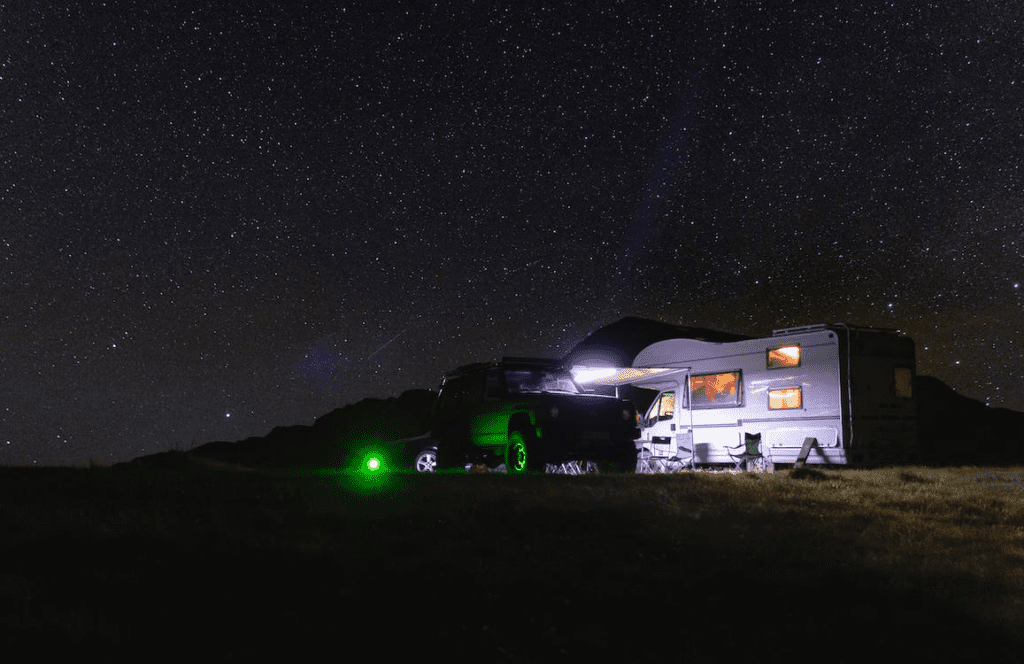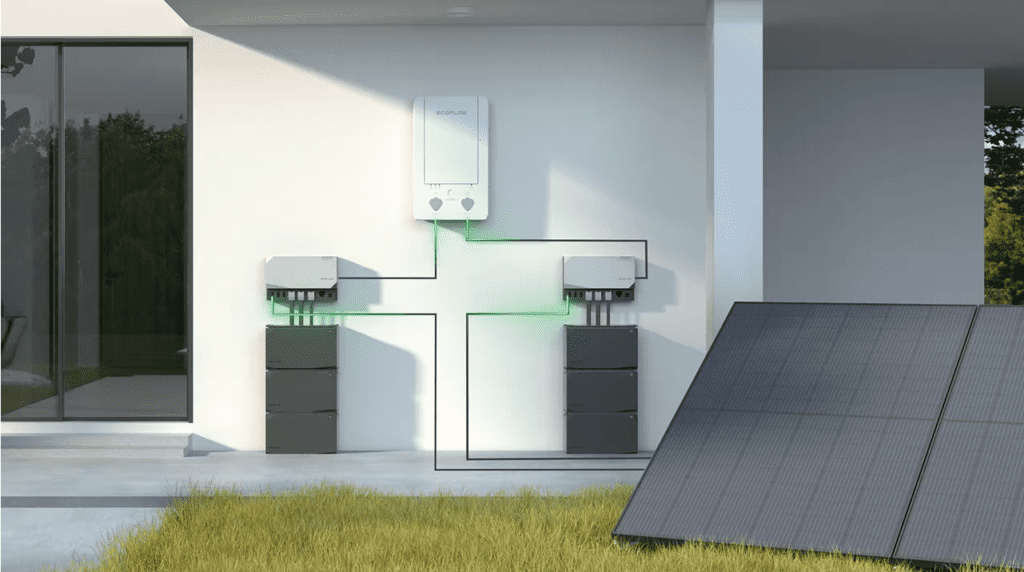Most people rarely think about where their electricity comes from—until it’s not there. Long-term power outages remain relatively infrequent. But with aging infrastructure, ever-worsening extreme weather events, and geopolitical instability increasing, long-term blackouts are becoming more common. When a long-term power outage does hit, it can create havoc.
The last few years have shown that even long-reliable electrical grids can experience catastrophic problems—leaving many thousands of homes without power for hours and sometimes even days. With global climate change worsening, power outages are poised to become a much more common event in our daily lives.
But just because blackouts are becoming more frequent doesn’t mean you can’t protect yourself. Preparation is critical to surviving a long-term power outage.
Common Reasons for a Long-Term Power Outage
Power outages can result from a whole catalog of issues, the most common being natural disasters and extreme weather. Weather-related events account for roughly 83% of all power cuts.
- Extreme weather: The most common reason for long-term power outages is when high winds, snow, ice, or extreme temperatures, such as an extended heat wave, arrive.
- Spikes in power demand: During periods of high power demand, usually in either very hot or cold weather, aging electrical grids and infrastructure can struggle to keep up.
- Power surges: A power surge is an unusually high voltage event that typically lasts for a short period. A surge can cause an outage itself or occur after utility providers restore power, potentially damaging home appliances.
- Human error: One of the worst outages in U.S. history, the Northeast Blackout of 1965, was caused by a maintenance worker incorrectly laying a protective relay on a transmission line.
- Trees/Vehicles/Animals: Fallen trees, often during storms, are a significant source of outages, while simple vehicle collisions with a utility pole can be hugely damaging. You’d also be amazed at how much damage squirrels, rats, and other animals can do to electrical equipment.
- Natural disasters: Power outages often follow in the wake of earthquakes, tornadoes, hurricanes, floods, wildfires, and volcanic eruptions.
How Likely Is an Extended Power Outage?
With aging grid infrastructure unable to keep up with growing demands for electricity, power outages will likely be a factor in our lives for many years to come. With increasingly erratic weather patterns and extreme weather events due to climate change, it can sometimes feel like we are always just a few steps away from disaster.
To date, most power outages in the United States remain relatively small scale. The average person experienced eight hours of power interruptions in 2020. U.S. utility customers experienced a total of 1.33 billion outage hours, higher than in 2019 but lower than in 2018, much of it due to a series of natural disasters that year, such as Hurricane Isaias. Maine, West Virginia, and California experienced the most prolonged outages, with residents of Maine experiencing 15 hours’ worth of outages per year on average.
While there are certainly hotspots, other parts of the country see far fewer outages, with the District of Columbia coming out on top, with just 77 minutes of power interruptions each year.
In 2021, Texas suffered a major power crisis. Over 4.5M homes and businesses were left without power in the dead of winter, many for days. At least 246 people died due to the long-term power outage.
It’s easy to get into a Doomsday scenario when thinking about an extended power outage. The Northeast Blackout of 1965 affected over 30 million people. It lasted 14 hours, making it one of the most widespread outages in U.S. history. But what would happen if something like that continued for days or weeks?
The U.S. government has contingency plans for such an event that would probably see the Army and National Guard step in to prevent widespread panic.
A 14-hour outage pales compared to Venezuela’s five-day blackout in 2019, which affected 70% of the country. The results were dramatic and frequently harrowing. In hospitals, vital life-saving equipment failed, leaving medical professionals battling alone while people remained trapped in lifts, on public transport, or even in their homes.
Extended power outages in the U.S. remain relatively infrequent. Still, with an ever greater strain placed on our power grids—along with increasingly extreme weather—we will probably see more blackouts in the future. Preparation has never been more vital.

What to Do to Prepare for a Long-term Power Outage
Unless you’re living completely off-grid, it’s difficult to escape power outages altogether. But there are numerous things you can do to prepare.
Safe Drinking Water
While your water supply won’t necessarily fail during a long-term power outage, it is possible. Humans require around half a gallon of water per day to remain healthy. It’s essential to stock up on clean drinking water for you, your family, and your pets before a disaster strikes.
Food & Supplies
Food is not as vital to the human body in the short term as water. But it will soon be a top priority during an extended power outage. Stock up sufficiently on non-perishable food, such as canned meats, fruits and vegetables, fruit bars, granola, peanut butter, and other high-energy foods that don’t require refrigeration. If you have an electric stove, keep in mind that you won’t be able to use it if you don’t have home backup power.
Remember the little things like a manual can-opener, and be aware of the necessities for good health. You might be able to survive for a while on Twinkies and chocolate bars, but it won’t be pretty.
Consider what other supplies you might need if you can’t leave your home for several days. If you rely on prescription or over-the-counter drugs—or other medical supplies—try to keep at least a week’s supply at home—if not more.
Lighting
When everything goes dark, it’s crucial to have lighting alternatives close to hand and ready to go. Keep a box containing LED lights, flashlights, and extra batteries, in an easily-accessible place. Candles have long been a go-to solution during blackouts but are not recommended as they pose a significant fire hazard.
Personal headlamps are inexpensive and give people more freedom to navigate a pitch-black environment.

Backup Power Solutions
With food and water supplies covered, next up is ensuring you have a viable backup power source. Make sure you always have it charged and easily accessible.
Off-grid solutions like the EcoFlow DELTA solar generators are an excellent way to maintain a reserve supply of electricity and generate additional power during sunlight hours. You can customize your Smart Home Ecosystem to create an off-grid home backup power solution that integrates with your home electrical supply.
With backup power solutions, you have a reliable failsafe when an outage strikes. Plus, with new battery technologies that offer higher capacities at lower prices than ever, you could run an entire household off your solar generator and outlast the blackout.
If you’re interested in investing in solar, don’t forget to check for tax breaks and incentives that can significantly offset your investment.
Preparing Based on Weather Conditions
A power outage during winter is very different from one during summer, and you should adjust your emergency plan accordingly.
In winter, you’ll need plenty of winter clothing, blankets, and space heaters to run with your backup power supply. You likely need fans and more water to offset the higher temperatures in summer. You should also use as much natural ventilation as possible around your house.
In extreme heat or a heat wave, fans may not be enough. The EcoFlow Wave Portable Air Conditioner can output 4,000 BTUs of cooling power for 12 hours when paired with a EcoFlow DELTA Pro Portable Power Station. Both can be recharged using portable solar panels.
How to Protect Yourself During a Long-Term Power Outage
Preparing for a power outage is only half the battle. When one does hit, it’s essential to know how to protect yourself, your family, and your home.
Don’t Leave Appliances Plugged In
A significant risk during a blackout is a power surge, which occurs when a massive volume of power overloads the system. It can cause severe damage to appliances that are left plugged in, so unplug everything in your home as soon as you realize the power has gone off. Either that or invest in high-quality surge protectors.
You can leave a few lights switched on so that you’ll know when the power returns.
Limit Water Use & Consumption
As soon as the power disappears, you must keep an eye on water use and consumption. It’s not a given that your water supply will fail, but it certainly can happen, and you may only have a limited supply.
Be mindful of how much water you and your household are consuming. You don’t need us to tell you that drinking water should take precedence over showers when your water supply is compromised.
Ration Your Food
Apart from dieting, most people in the first world have never needed to ration their food. But rationing food is vital during any power outage. You never know for sure how long you’ll be without power or when you can buy more food.
An outage can be incredibly stressful, and stress often leads to over-eating. It’s crucial that you don’t charge through your supplies too quickly. Not only will it not help in a stressful situation, but you may end up adding to your anxiety—and endangering your health—by running out of food.
What to Do After an Extended Power Outage
When the power suddenly clicks back on, it’s natural to feel an enormous sense of relief that life has returned to normal. As tempting as it can be to just switch on the TV and enjoy the return of your power supply, there are a few things you’ll need to do after an extended power outage.
Replenish Any Emergency Supplies
It’s important not to get complacent. Yes, the likelihood of another outage immediately following this one may seem low. But repeated outages are actually quite frequent—particularly when the root cause is the vulnerability of an aging electricity grid.
Replenish your emergency supplies to their original levels as quickly as possible. Pay attention to what worked and what didn’t to improve your quality of life the next time a blackout strikes. If you don’t have a reliable home backup power solution, now is probably the time to start shopping.
Check Food for Safety
If your power (and refrigeration) has been off for days, check perishable items as quickly as possible.
Any food exposed to temperatures above 40 °F for more than two hours may carry bacteria and disease. Anything in your fridge that gives off a pungent odor or turns an unappealing shade of gray should go immediately in the trash.
When in doubt, throw it out!
Reconnect Appliances
You’ll probably be itching to get back to normal but don’t run around the house frantically reconnecting every appliance quickly. As mentioned, power surges can prove catastrophic and often occur just after a major power outage when everybody is running around their homes, reconnecting appliances and devices.
We’re not saying you should remain in power outage mode for any longer than necessary. Simply waiting an extra hour should ensure the risk of a surge has passed. Start by connecting only essential appliances at first.
Frequently Asked Questions
Our society depends almost entirely on electricity. A long-term power outage would have catastrophic effects. Crime rates rise during blackouts, and our economic system could effectively collapse. A few days without power might be doable. Anything more prolonged, and things would likely go downhill fast.
Final Thoughts
Power outages are often considered more of a nuisance than a threat to human life. But they can be deadly for some—especially when accompanied by extreme temperatures. Simple steps like organizing an emergency stockpile of water, food, medication, and other supplies—and purchasing a reliable backup power source—can prepare you to ride out the outage with as little stress as possible.
For a wide selection of high-performance home backup and off-grid power solutions, consider EcoFlow. Our selection of portable power stations, solar generators, power kits, and more let you customize your Smart Home Ecosystem to meet your electricity needs—even during a long-term power outage.
